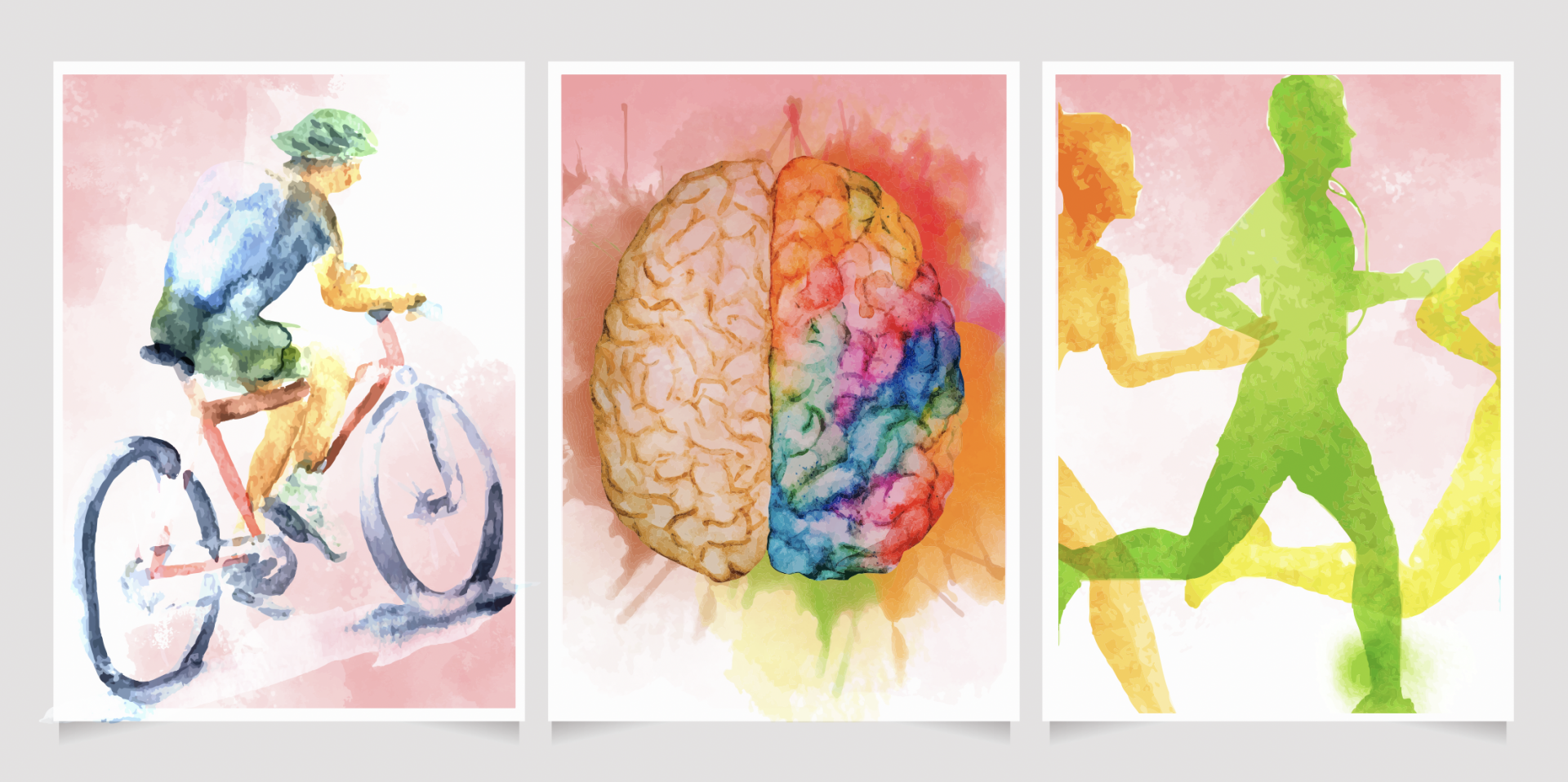
How physical exercise helps individuals with schizophrenia
In this section
Schizophrenia is one of the most disabling mental disorders.1
The main treatment options include medication and psychological therapy, but additional options are required to enhance symptom alleviation.2
Individuals with a diagnosis of schizophrenia have reduced life expectancy by about 15-20 years,3 mainly due to poor physical health caused by the side effects of antipsychotics that cannot be treated with psychopharmacology or psychological therapies.4
In order to identify interventions that help improve schizophrenia symptoms, research focused on adjunctive treatment options and discovered the potential of physical exercise.5 The benefits of physical exercise are well-known, but how exactly does it help people with schizophrenia?
Benefits of exercise for schizophrenia
Improves cognitive functioning
Cognitive deficits, along with negative symptoms, are the most disabling aspects of schizophrenia that antipsychotics do not treat adequately.4 By combining the findings from several studies, research has shown that exercise has the potential to improve cognitive deficits in patients with schizophrenia. Compared to those who did not engage in physical activity, individuals who exercised weekly showed marked improvements in cognition, more specifically in three areas: working memory, attention/vigilance and social cognition.5 Also, research has pointed out that the amount of exercise is positively correlated with cognitive improvements.
Alleviates negative symptoms
Studies have investigated how aerobic versus stretching exercises impact on the positive and negative symptoms as well as the overall psychopathology of schizophrenia. In one study,6 all participants exercised around 30 minutes three times a week for 12 weeks, but one group did aerobic exercise, the other group did stretching exercises. It was found that those who did aerobic exercise improved in all the examined areas significantly more than those who did stretching exercises. The improvements were still observable 3 months after the 12-week study period ended and strikingly, negative symptoms continued to improve. Also, the more severe negative symptoms were prior to the intervention, the better the improvements that were seen were post-intervention. This is an important finding given that negative symptoms are harder to treat7, so adding aerobic exercise to their weekly routine helped individuals to live a more functional life.
Combats weight gain
Although antipsychotics are the first-line medication treatment for schizophrenia and they produce marked symptom-improvements, they cause side-effects, including weight gain.8 By getting physically more active and engaging in aerobic exercise, weight gain can be controlled.4
Reduces physical illnesses
Side-effects of antipsychotics might contribute to the development of physical health issues, like diabetes, hypertension and cardiovascular diseases.9 Metabolic conditions are twice as prevalent among those who take antipsychotics than among the general population10 and such conditions are the major causes of premature death among schizophrenia patients.3 One study11 investigated whether walking or cycling to work reduces the risk of heart diseases. By following up participants for a median of 5 years, it was found that the number of deaths and hospital admissions linked to heart diseases were significantly lower among those participants who walked or cycled to work every day versus among those, who chose a non-active transportation-mode (i.e. car or public transport). So, physical exercise helps counter antipsychotics’ side-effects so that people living with schizophrenia can have a longer, healthier life.
Which exercise is better?
Guidelines suggest that moderate-to-vigorous intensity aerobic exercise has pronounced physical health benefits12, as seen in the presented findings as well.
Moderate-intensity aerobic activities include:
Brisk walking
Gardening
Dancing
Slow cycling
Vigorous-intensity aerobic activities include:
Running
Swimming
Jumping rope
Fast cycling
How much exercise should people aim for?
According to NHS guidelines, 150 minutes of moderate or 75 minutes of vigorous exercise per week is recommended in order to experience positive health benefits.12 There is no need to do all 150/ 75minutes at once, it can be broken down into smaller amounts and spread the workouts throughout the week.
Getting started?
It is possible that people are just starting to get into exercising and cannot complete the recommended 150 minutes per week. The ultimate aim should be to form a habit, where consistency is key. Small changes should be made first and the amount of exercise should be increased progressively.
Easy ways to make small changes to physical activity levels include:
Walking to the shop instead of driving
Taking the stairs instead of the lift
Walking instead of taking the bus
Fitting a brisk, 10-15 minute walk into the daily schedule
References
- Tandon R, Nasrallah HA, Keshavan MS. Schizophrenia, “just the facts” 4. Clinical features and conceptualization. Schizophr Res. 2009; 110 (1–3): 1-23.
- Patel R, Cherian J, Gohil K, Atkinson D. Schizophrenia: overview and treatment options. P T. 2014; 39 (9): 638–45.
- Laursen TM. Life expectancy among persons with schizophrenia or bipolar affective disorder. Schizophr Res. 2011 131 (1–3): 101–4.
- Girdler SJ, Confino JE, Woesner ME. Exercise as a treatment for schizophrenia: a review. Psychopharmacol Bull. 2019; 49 (1): 56–69.
- Firth J, Stubbs B, Rosenbaum S, et al. Aerobic exercise improves cognitive functioning in people with schizophrenia: a systemic review and meta-analysis. Schizophr Bull. 2017; 43 (3): 546–56.
- Wang PW, Lin HC, Su CY et al. Effect of aerobic exercise on improving symptoms of individuals with schizophrenia: a single blinded randomised control study. Front Psychiatry. 2018; 9: 167.
- Erhart SM, Marder SR, Carpenter WT. Treatment of schizophrenia negative symptoms: future prospects. Schizophr Bull. 2006; 32 (2): 234–7.
- Dayabandara M, Hanwella R, Ratnatunga S et al. Antipsychotic-associated weight gain: management strategies and impact on treatment adherence. Neuropsychiatr Dis Treat. 2017; 13: 2231–41.
- Casey DE, Haupt DW, Newcomer JW et al. Antipsychotic-induced weight gain and metabolic abnormalities: implications for increased mortality in patients with schizophrenia. J Clin Psychiatry. 2004; 65: 4–18.
- De Hert MA, van Winkel R, Van Eyck D et al. Prevalence of the metabolic syndrome in patients with schizophrenia treated with antipsychotic medication. Schizophr Res. 2006; 83 (1): 87–93.
- Celis-Morales CA, Lyall DM, Welsh P et al. Association between active commuting and incident cardiovascular disease, cancer, and mortality: prospective cohort study. BMJ. 2017; 357: j1456.
- 12. NHS. Exercise. (2019). Accessed January 2021.
OUR PRODUCT AND METABOLIC PARAMETER…
Individuals with schizophrenia are more likely than members of the general population to be overweight or obese. Moreover, a large number of patients with schiz
more…OUR PRODUCT’S BENEFITS IN THE LONG …
Atypical antipsychotics need to be effective across the span of illness in patients with schizophrenia. When patients experience acute exacerbation of psychotic
more…